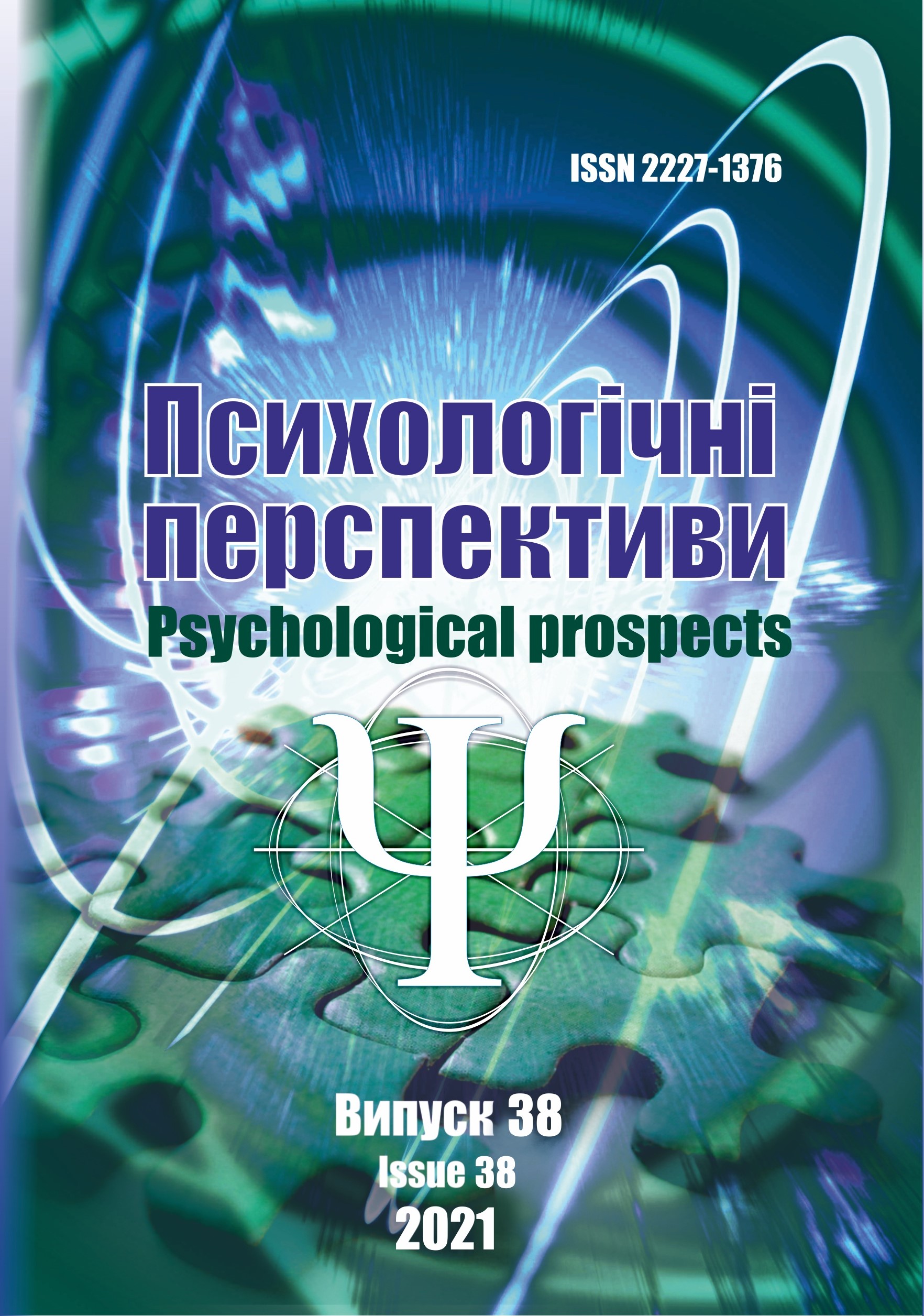Online cognitive-behavioral therapy of students' emotional distress during the COVID-19 pandemic.
DOI:
https://doi.org/10.29038/2227-1376-2021-38-49-62Keywords:
online cognitive-behavioral therapy, anxiety, depression, social anxiety, resilience, 3D SAM.Abstract
Purpose. The COVID-19 pandemic is currently being transformed into the second wave, associated with mental health. Notwithstanding the fact that students have not been considered a vulnerable group for a long time during the pandemic, recent research shows that they experience acute stress, anxiety, loneliness and depression under the circumstances of forced social isolation. The study aims to examine emotional distress in students during the pandemic COVID-19, and to develop online cognitive-behavioral therapy (CBT) for students.
Methods. The study applies Ryff Scale for Psychological Well-Being, Beck Depression Inventory, Protective Factors for Resilience Scale (PFRS), Beck Anxiety Inventory. The computer program Linguistic Inquiry and Word Count (LIWC) was used for thematic analysis.
The results of assessing psychological well-being indicate that subscales of environmental mastery, the establishment of quality ties to other, self-acceptance, and the pursuit of meaningful goals and a sense of purpose in life are represented at the lowest levels. Therefore, developing an online CBT for students was focused on these aspects of students’ psychological well-being. The results of linear regression analysis indicate that anxiety, depression and resilience taken together is a significant predictor of psychological well-being. However, only depression is an independent significant predictor of students' psychological well-being. Considering anxiety and loneliness as the key themes mentioned in the students’ essays, as well as social anxiety, aligned with the deficit of communicative situations during pandemic, online CBT aims to reduce depression and loneleness, anxiety and social anxiety. Therefore, the online CBT is called 3 -D SAM. The content and structure of online CBT for students are aligned with key categories of cognitive processes, affects, time, represented in the students’ essays, and the methodological foundations of CBT.
Conclusions. The online CBT is an important innovative psychological self-support for students during COVID-19 pandemic.
References
Zasiekina, L. (2021). Akademichma dobrochesnist, yakist osvity, yakist zhytya studentiv v umovah dystantsyinogo navchannya [Academic integrity, quality of education, and quality of life of students under the circumstances of distant learning]. Naukovi zapysky natsionalnogo universitety Ostrozska academia- Research Notes of National University of Ostroh academy. Psychology, (12), 41-45 [in Ukrainian].
Alavi, N., Yang, M., Stephenson, C., Nikjoo, N., Malakouti, N., Layzell, G., ... & Soares, C. N. (2020). Using the online psychotherapy tool to address mental health problems in the context of the COVID-19 pandemic: protocol for an electronically delivered cognitive behavioral therapy program. JMIR Research Protocols, 9(12), e24913.
Foulkes, L., & Blakemore, S. J. (2021). Individual differences in adolescent mental health during COVID-19: The importance of peer relationship quality. Neuron, 109(20), 3203-3205.
Knapp, P., & Beck, A. T. (2008). Cognitive therapy: foundations, conceptual models, applications and research. Brazilian Journal of Psychiatry, 30, s54-s64.
Kopelovich, S. L., & Turkington, D. (2021). Remote CBT for psychosis during the COVID-19 pandemic: challenges and opportunities. Community Mental Health Journal, 57(1), 30-34. https://doi.org/10.1007/s10597-020-00718-0
Otu, A., Charles, C. H., & Yaya, S. (2020). Mental health and psychosocial well-being during the COVID-19 pandemic: The invisible elephant in the room. International Journal of Mental Health Systems, 14, 1-5. https://doi.org/10.1186/s13033-020-00371-w
Passavanti, M., Argentieri, A., Barbieri, D. M., Lou, B., Wijayaratna, K., Mirhosseini, A. S. F., ... & Ho, C. H. (2021). The psychological impact of COVID-19 and restrictive measures in the world. Journal of Affective Disorders, 283, 36-51. https://doi.org/10.1016/j.jad.2021.01.020
Pennebaker, J. W., Boyd, R. L., Jordan, K., & Blackburn, K. (2015). The development and psychometric properties of LIWC2015.
Schiff, M., Zasiekina, L., Pat-Horenczyk, R., & Benbenishty, R. (2021). COVID-related functional difficulties and concerns among university students during COVID-19 pandemic: A binational perspective. Journal of Community Health, 46(4), 667-675. https://doi.org/10.1007/s10900-020-00930-9
Versteeg, M., & Kappe, R. (2021). Resilience and Higher Education Support as Protective Factors for Student Academic Stress and Depression During Covid-19 in the Netherlands. Frontiers in Public Health, 1555. https://doi.org/10.3389/fpubh.2021.737223
Williams, M., & Penman, D. (2011). Mindfulness: a practical guide to finding peace in a frantic world. Hachette UK.
Downloads
Published
Issue
Section
License
Copyright (c) 2021 Psychological Prospects Journal

This work is licensed under a Creative Commons Attribution-NonCommercial 4.0 International License.






